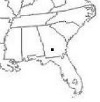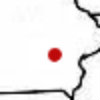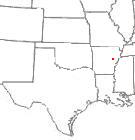|
|

Texas/New Mexico Stateline | I thought this was interesting. If it has already been discussed pardon me.
They used a cable with a pulley to basically play tug of war between the two tractors pulling one big tractor. They even did one pull then swapped the tires and did it again to get rid of any variables between the two tractors. Oh-Firestone won both times.
http://www.businesswire.com/portal/site/google/?ndmViewId=news_view... |
|
| |
|

Remsen, IA | nt |
|
| |
|

Woodham, Ontario | Same here. We wore out a set of Firestone R1s and replaced them with agribibs and could not be happier.
Some more details would be nice too.
Edited by Gerard 4/2/2008 18:50
|
|
| |
|

| me too. Love my micheln agribibs a lot better than the 'ol 23 degree firestones... |
|
| |
|

South Dakota | here is the link to firestone's site with the video and more info http://treadtotread.com/ |
|
| |
|

| It's an interesting test but I noted a couple of things. The Firestone is an R-1 and the Michelin is an R-1W. So for a 18.4-42 tire there is a difference in lug height 19/32nd or about 5/8" on a brand new tire, 50/32nds for the Firestone and 69/32nds for the Michelin. That difference in lug height could make a difference in pulling force when new due to lug flex, depending on conditions. But you should get longer life with 5/8" more lug on the Michelins. I don't know what size tire was on the tractors, I just picked a size randomly. I have nothing to gain with either tire, I just think these tests are interesting and it can be fun to see if there's a reason why one might win over the other. You can bet if the ground was softer or wetter the R-1W might be the better choice.
|
|
| |
|

Sumner GA, Located in southwest GA, | So, according to your post, the difference between a R1 and a R1W is a taller lug on a R1W.
Please could someone post and tell me what the differences of a R1 and a R1W tire is. TIA |
|
| |
|

SEIA | He pretty much nailed it. R1W=deeper lug than R1, but not as deep as R2 (rice tires). |
|
| |
|
SC Iowa | The only real test would be to mount a different brand on each side of the tractor. Then use a counter on each axle to count revolutions over 500 or a 1000 hrs to see the one that slipped more. You could also check the progress of tire wear at that time to get a real answer to the better tire. TORQUE |
|
| |
|

Wheatley, Arkansas | I think the R-1W has a larger space between lugs too, doesn't it?
Les |
|
| |
|

Brazilton KS | Yep. |
|
| |
|
Elmira, Ontario | I know people who like both so I don't have a real bias. What I noted in the video was that the conditions were fairly hard. The traction in that condition is obtained by the flat surface of the tread, but especially from the leading edge. The Firestone R1 tread spacing is probably around 6" apart compared to probably around 8" on the R1W Michelin. In a higher moisture field with less soil tensile strength on the surface, the tread needs to punch into the ground to get the best grip. I'd think the R1W spacing would have more traction then. It would have been more instructive if Firestone had done a video showing one of their R1W tires against their own R1 tire. I'd like to see that kind of video done in various soil conditions so we can all learn where each type of tire has the advantage. |
|
| |
|

Pittsburg, Kansas | The Michelin's are R1W tread which is deeper than the Firestone's. Logic would seem that a deeper lug would be an advantage but in reality a short lug in firm soil is actually more efficient. On hard ground, a half worn out tire will pull more than a full tread. Mud or soft soil is a different story, but firm soil with proper weighting, short bars are better. Tractor pullers don't use big deep tread.... they are on a firm track. The Michelin's with deeper tread were at a disadvantage. We buy tires with deep tread for good reasons, but pulling the most efficiently on hard or firm soil is not one of them. John |
|
| |
|

North Central Iowa | That will only work well if the tractor drives straight for that time period. A lot of guys farm in circles and most people tend to turn one way when doing that (they don't go the opposite way in the next field). The tire on the inside of the circle will obviously end up with fewer revolutions. Mike |
|
| |
|
| I noticed the line that each tire was set to equal air pressures. I know that Michelin recommends lower air pressures that Firestone for a given weight (tire book data) so that would mean that the Michelin tires were probably aired up too high. this would contribute to the extra slippage seen.
Firestone tires do have more treadbars on the tires due to closer spacing. This will help on the hard soil types.
|
|
| |
|
| .... and their point is?? Why didn't Firestone compare apples to apples? They also have an R-1W.
I have a set of 23 degree Firestones that I like just fine. I also have a few sets of Michelin Agribibs and BFG Power 80's which are R-1W's as opposed to the Firestone R-1.
What I've observed is that the Michelin's are poor on a hard surface. They have a considerably larger footprint than the Firestone 23 degree along with their deeper lug so that sets them at an immediate disadvanage on a hard surface. In that situation you would want a short lug that doesn't squirm and a smaller footprint to gain as much downpressure advantage as possible on the hard surface. So yes, in the test that Firestone showed, their Radial All Traction 23 degree R-1 is going to outperform the Michelin Agribib R-1W. No denying that fact.
Likewise, if you take the same set of tires and go into a wet field where the lugs will bite to their full depth I can also guarntee you that the Agribib will win, flat out, hands down. The tractor with Firestones will be stuck to the axles. The Michelin bites deep enough that it can bite without slipping.... and if the wheel doesn't spin, they keep moving. That tire is truly something to watch on a soft squishy surface like that.
Again, I have both, and like both tires for a given situation. That's just what I've observed....
Rod |
|
| |
|
Denhoff,ND right in the center of the State | I own both tires here also and think the the same as you do, love the Michelins for wet ground or on my loader tractor, I like the Firestones for in the field if it is dry, but have witnessed where the Michelin is better in wet conditions,also have a set of BF Goodrich radials and they are good foor wet conditions also. Both the Michelin and BFGs clean very well in mud, where the Firestone 23 degree will mud up and your stuck and yes I have had it axle deep. |
|
| |
|

Pittsburg, Kansas | When companies do gimmicks like these you have to wonder if A: their engineers are really that dense or B: they are low-life types that will lie and cheat any way they can to sell you something.
Either one is not too good of a reflection on the company in my opinion. It just makes me ask the question, can I trust anything they say? It also makes me believe there is a good reason for them NOT to compare their R1W with the competitions R1W.
Do they think we are not going to figure out the deck is stacked in their favor? John
Edited by John Burns 4/3/2008 18:09
|
|
| |
|
| I have another angle. Tires that I am aware of from different companies can have different loaded rolling circumferences even though they are the same "size". I would bet the Firestone is a little bigger around and therefore travels a little farther at a given engine speed. If they are maintaining a constant engine speed, they are probably not working the tractors very hard so slip is less of an issue. Just guessing but..... |
|
| |
|

Brazilton KS | Here's my version of that question: Are they that stupid, or do they think their customers are that stupid?
|
|
| |
|
Elmira, Ontario | They specifically said they used Michelin's chart.
|
|
| |
|
Elmira, Ontario | If it didn't work, they wouldn't do it |
|
| |
|
| Well yes, I wondered why they didn't want to compare their R-1W to the Bibs.... I'm pretty sure of the answer to that without seeing the 'test'. The Michelin would be ahead on that deal I believe.
I don't care for being taken for a fool like that either. I've been trying to deal with a few local hydraulic shops lately on PFC components. All have either extolled the depth of their basic knowledge upon me in steering me towards tandem center valves or condemning Bosch/Rexroth components.
They don't understand PFC hydraulics so they assume that nobody else does. The Firestone video pissed me off in about the same way....
Rod |
|
| |
|
| It isn't all that hard to figure why the firestone tire beat the Michelin. The biggest difference between the two brands is the tread design. The 23 degree bar will out-pull the higher angle 45 degree bar that Michelin puts out. It only makes sense that the lower the bar angle the better the bite. If you had tire bars with no angle, like the cleats on a Cat, you would get the most traction but a terrible ride. If the Firestone tire had been an R1w I'd bet money it would out-pull the Michelin as much or more. It's all about the tread design more than anything else. I prefer the R1W with a 23 degree tread. |
|
| |
|

Brazilton KS | Firestone's R1W's are 45 degree.
|
|
| |
|
| Firestone makes R1Ws in 45 degree and 23 degree bar designs. This isn't new. Check their Web site at firestoneag.com and see for yourself. The name is called Radial DeepTread 23 R-1W.
|
|
| |


 Michelin vs. Firestone tractor tires -tug of war
Michelin vs. Firestone tractor tires -tug of war





